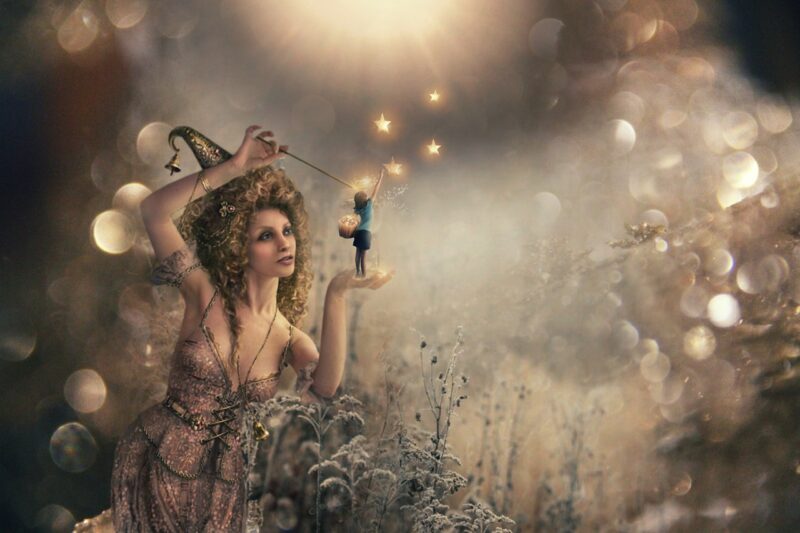The Role of Mythical Creatures in Folklore and How They Reflect Human Fears and Dreams
November 17, 2024

Mythical creatures have long captivated human imagination, woven into the fabric of folklore across cultures and civilizations. These fantastical beings—ranging from the majestic unicorn to the fearsome dragon—serve as powerful reflections of society’s collective fears, desires, and aspirational dreams.
In this article, we explore how mythical creatures emerge from the depths of the human psyche, embodying our fears and dreams, while ultimately evolving to shape cultural narratives.
1. The Origin of Mythical Creatures
The roots of mythical creatures stretch back to humanity’s earliest days. Archaeological evidence suggests that ancient civilizations used art and storytelling to communicate beliefs, morals, and explanations of natural phenomena. Mythical creatures often emerged as early humans attempted to make sense of the world around them.
For instance, the myth of the griffin—half eagle, half lion—was likely inspired by the fossils of prehistoric creatures that early people discovered. In this way, mythical beasts can be understood as early attempts to explain the mysteries of nature and our place within it.
Additionally, these beings often arose in conjunction with human emotions, acting as metaphors for societal concerns or aspirations. They personified powerful concepts, encapsulating human fears ranging from death and the unknown to unfulfilled desires and moral dilemmas.
2. Mythical Creatures as Symbols of Fear
Throughout history, humans have repeatedly conjured mythical creatures as symbols of their deepest fears. Dragons, for example, often represent chaos and destruction. From ancient civilizations to contemporary narratives, dragons evoke imagery of challenges that must be faced, embodying natural disasters, wars, and personal struggles.
In many cultures, the act of slaying dragons—or overcoming these beasts—serves as a metaphor for confronting one’s fears. Heroic tales often feature dragons that must be defeated to save a kingdom or restore peace, reflecting the universal journey of battling inner demons and external conflicts. Conversely, dragons may also symbolize greed and the temptation of power, as seen in tales like J.R.R. Tolkien’s “The Hobbit.”
Moreover, mythical creatures like the werewolf represent our fears surrounding loss of control or transforming into something monstrous. In folklore, werewolves personify the struggle between civilization and primal instincts, often appearing in cautionary tales about the consequences of succumbing to darker desires.
3. Mythical Creatures as Reflections of Hope
While many mythical creatures evoke fear, they also embody hope and the human spirit’s resilience. The phoenix, which rises from its own ashes, symbolizes rebirth, renewal, and the power to overcome adversity. It serves as a potent reminder of the transformative power of grief and loss, encouraging people to embrace change and find strength in vulnerability.
Moreover, creatures such as the unicorn, which symbolizes purity and grace, represent humanity’s ideals and dreams. Throughout history, unicorns have been associated with untamed beauty, enlightenment, and the purity of love. These beings encourage individuals to pursue their dreams and better themselves, embodying aspirations that are worthy and noble.
Such portrayals of mythical creatures add layers of meaning to our collective storytelling, serving as reminders of both the challenges we face and the ideal that lies beyond them. By juxtaposing fears with dreams, these narratives push individuals toward growth and transformation.
4. The Cultural Significance of Mythical Creatures
Across the globe, cultures have distinct mythical creatures that resonate deeply with their values, beliefs, and collective experiences. The diversity of these beings highlights the universal themes of human existence while revealing unique cultural sensitivities.
For instance, the Japanese kappa—a creature that dwells in rivers—represents the intersection of caution and reverence for nature. Often depicted as mischievous, kappa tales serve as warnings for children to stay away from deep water while still encouraging a connection to the environment.
Similarly, the Native American skinwalkers symbolize the complexities of man versus nature, bridging the gap between the two realms. Their stories convey respect for nature’s power and consequences of transgressing societal norms.
On the other hand, the European phoenix and the African Anansi both embody themes of cunningness and resilience. The shared motifs of reinvention and survival reveal how different cultures process their unique histories while tapping into shared human experiences.
5. Modern Interpretations of Mythical Creatures
Today, mythical creatures have resurged in popular culture, particularly in literature, movies, and video games. This rebirth showcases the evolving relationship humans maintain with these beings, as they continue to reflect our fears and dreams in contemporary contexts.
For example, series like “Harry Potter” introduces a new generation to creatures like house-elves and dragons, intertwining themes of friendship, loyalty, and triumph over adversity. Likewise, the emergence of the superhero genre in film showcases modern mythical beings that redefine power, morality, and purpose.
Through these retellings, mythical creatures become conduits through which societal issues—such as diversity, acceptance, and personal identity—are woven into narratives, fulfilling the same functions that they served in ancient societies. They provoke thought, inspire hope, and challenge individuals to reimagine their realities.
6. Conclusion: The Enduring Legacy of Mythical Creatures
As we continue to share the stories of mythical creatures, we preserve the legacy of human fears, dreams, and aspirations. The creatures of folklore allow us to confront and explore the vast complexities of our existence, serving as reminders of both the shadows and the light that define the human condition. Mythical beings hold a vital place in our shared narrative, encouraging us to dream, confront our fears, and ultimately shape our future.
In a world full of uncertainty, the tales of these fantastical beings remind us of our courage and capacity for hope amidst the trials we face.
Embrace these stories and let them inspire your own journey through the realms of imagination and reality.







